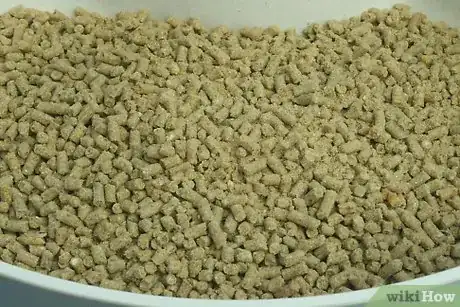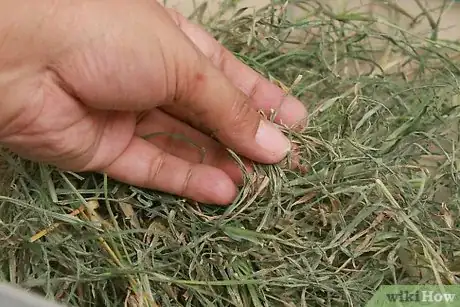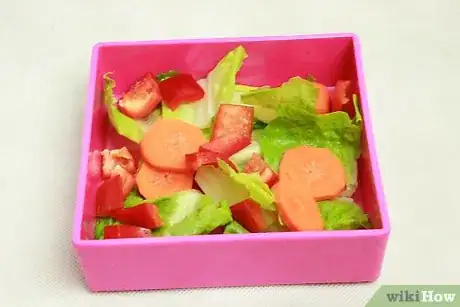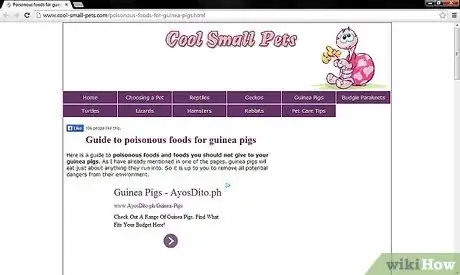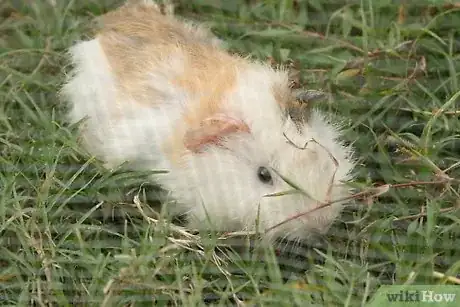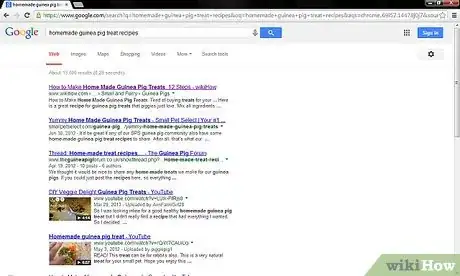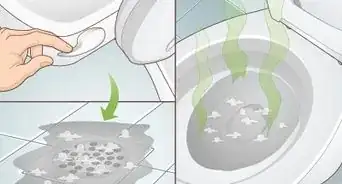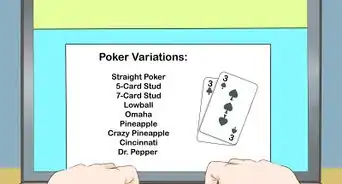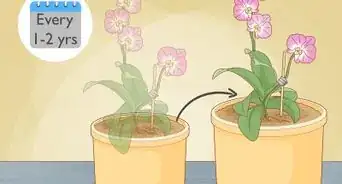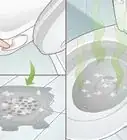X
wikiHow is a “wiki,” similar to Wikipedia, which means that many of our articles are co-written by multiple authors. To create this article, 14 people, some anonymous, worked to edit and improve it over time.
This article has been viewed 19,352 times.
Learn more...
Guinea pigs require a healthy and balanced diet to live a happy life. This includes enough vitamin C, fresh vegetables, a high-quality pellet brand, unlimited hay, and clean water. Continue reading this wikiHow article to find out more on providing your guinea pig with a healthy and happy diet.
Steps
-
1Select a good pellet. Make sure the pellets you select have a high nutritional value, pellets enriched with vitamin C are often recommended.[1] Plain pellets without any added seeds or colored treats should be selected. This ensures that your guinea pig will be eating the nutrients it requires without all the sugar and dangerous bits and pieces inside.
- Use alfalfa-based pellets for guinea pigs under 6-months-old and timothy based pellets for older guinea pigs.
- Pellets with treats inside shouldn't be bought even if your guinea pig enjoys it. Often the guinea pig will go more for the treats rather than the nutritional pellet.
-
2Allow constant access to hay. Use timothy hay or a very good quality meadow hay. Hay is extremely important for your guinea pigs teeth and digestive health. Chewing on hay helps wear down their constantly growing teeth, keeping them at the correct length. Your guinea pig should have constant access to hay, as it keeps their digestive system moving and they are grazing animals that need to be chewing on something constantly.[2]
- Alfalfa hay should not be used as their main source of hay due to its high calcium content. It can be given as an occasional treat, but should not replace a healthier hay like timothy hay.
Advertisement -
3Give your guinea pig fresh vegetables. One adult guinea pig should have 1 cup of fresh vegetables per day. Like humans, guinea pigs do not make their vitamin C so they must rely on their diet to provide them with this. Vegetables high in vitamin C should be given more frequently, like bell peppers, asparagus, or broccoli.[3]
- Some other safe and healthy vegetable options include: Kale, romaine lettuce, carrots, spinach, parsley and cilantro.
-
4Limit your guinea pigs fruit intake. Fruit should be given as a treat now and then, however, they are very high in sugar so should be limited to once a week at its most. Apples, bananas, pears, strawberries and blueberries are some safe options if given in small amounts. Oranges can also be given, but in smaller slices as the citrus can result in mouth sores if your guinea pig consumes too much. [4]
-
5Provide unlimited fresh water. This seems obvious, but it's often the most important. You can either provide fresh water through a bottle or a bowl. Whilst a bowl is more natural they can be super messy and spill all over the bedding. The water must be refilled every day and the container must be cleaned at least once a week.
-
6Know which foods are dangerous. To give a good diet it is your job to know which foods are dangerous to guinea pigs. Guinea pigs cannot eat dairy, meat, citrus and/or any human foods including salt.[5]
- For a more detailed list, guinea pigs cannot eat: avocado, potatoes, rhubarb, onion, raw kidney beans, spicy peppers, cabbage (unless limited), cauliflower (unless limited), seeds, nuts, wild mushrooms, wild berries (commercial sold are okay), bread, biscuits, sweets/candies, cereals, yogurt, cheese and most house plants.
- Do not give your guinea pig grass or lawn clippings. Grass can only be given if you are certain it isn't treated with pesticides or a dog hasn't urinated on it.
- Do not add vitamin C to your guinea pigs water. They should get their vitamins naturally as artificially adding it to their water will make them not want to drink.
-
7Allow for grazing outside. If you have chemical-free grass with nothing dangerous including no dogs/cats urine then your guinea pig will love to graze there. You can set up a safe, secure cage or move a hutch over long grass and allow them to chew their way through. Make sure there aren't any other plants in the grazing area as many can be poisonous to guinea pigs.
- Alternately you can cut some grass and chuck it in your guinea pigs cage. Do not replace hay for grass.
-
8Make home-made treats for your guinea pig. You can easily make some treats for your guinea pigs as an alternative to commercial treats. Just be aware that guinea pigs can't eat dairy (such as milk) and nuts/seeds.
- Limit your treats, however, as they can be detrimental to your guinea pigs health and weight.
Advertisement
Community Q&A
-
QuestionAre apples and pears ok?
 Community AnswerYes, in very small quantities.
Community AnswerYes, in very small quantities. -
QuestionMy guinea pig lost two teeth in the front. Is this normal?
 Community AnswerNo, this is not normal. Please contact a vet immediately and ask for their advice.
Community AnswerNo, this is not normal. Please contact a vet immediately and ask for their advice. -
QuestionI feed my pigs vegetables twice a day. Is this enough?
 Community AnswerYes. Just do your best to give them new treats, too. If you only ate pizza for a month, you would want something else at one point.
Community AnswerYes. Just do your best to give them new treats, too. If you only ate pizza for a month, you would want something else at one point.
Advertisement
Warnings
- Limit the foods that you give to your guinea pig. Overfeeding your guinea pig can have consequences to their health.⧼thumbs_response⧽
Advertisement
References
About This Article
Advertisement
